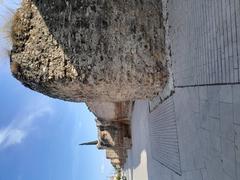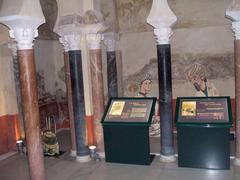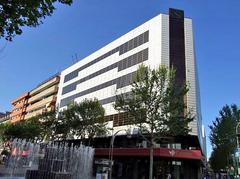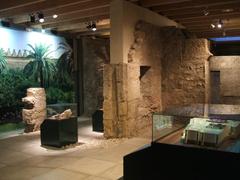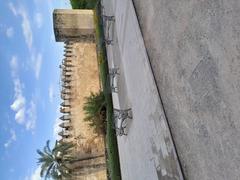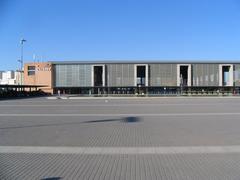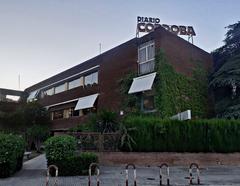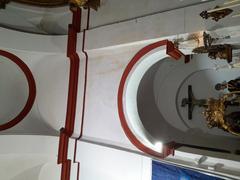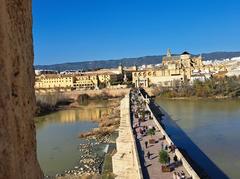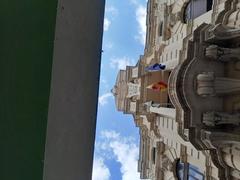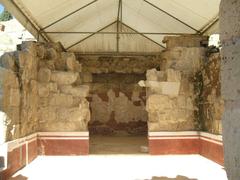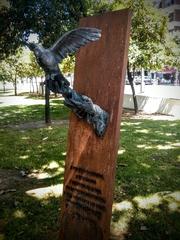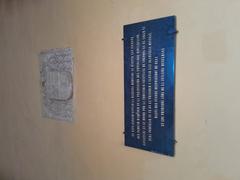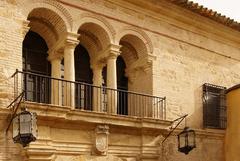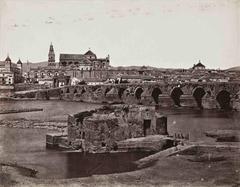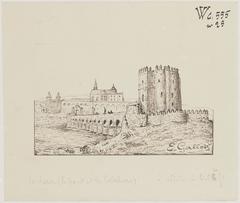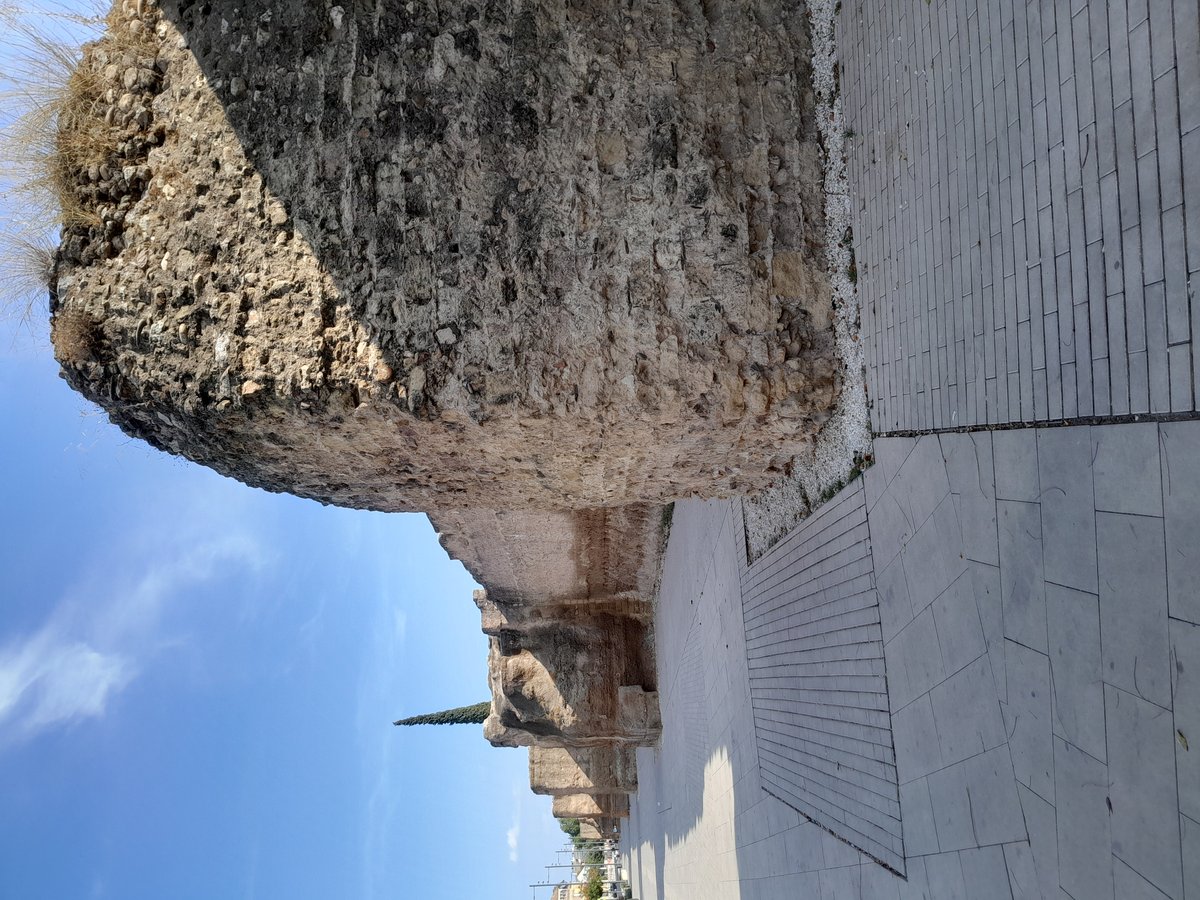
Muralla en Ronda de Marrubial: Visiting Hours, Tickets, and Historical Sites in Córdoba, Spain
Date: 14/06/2025
Introduction
The Muralla en Ronda de Marrubial stands as an enduring symbol of Córdoba’s rich and layered history. This stretch of ancient city wall, located in the Axerquía district, weaves together the city’s Roman foundations, Islamic military ingenuity, and Christian-era modifications. As one of the most significant and best-preserved sections of Córdoba’s medieval defenses, the Muralla not only fulfilled strategic and protective functions but also played a vital role in defining the city’s social, political, and urban landscape.
Today, the wall is freely accessible to visitors and has been thoughtfully integrated into Córdoba’s urban environment. This guide provides a comprehensive overview of the Muralla’s origins, architectural features, cultural significance, visitor information, and practical tips—helping travelers make the most of their experience at this essential historical site (Wikipedia; Turismo de Córdoba; artearqueohistoria.com; Siente Córdoba; abc.es).
Historical Overview
Roman Beginnings
Córdoba’s first walled enclosure dates back to the 2nd century AD, when Corduba was fortified as a Roman municipium. The original walls, spanning over 2,650 meters, not only protected the city but also defined its urban extent and regulated access. Over time, the walls were expanded and modified, particularly during the reign of Emperor Tiberius, who extended the city towards the Guadalquivir River. With the gradual decline of the Roman Empire, these defenses deteriorated and required substantial rebuilding in later centuries (Wikipedia).
Islamic Expansion and the Axerquía
Córdoba flourished under Islamic rule, especially during the 11th and 12th centuries. The original Roman walls were reconstructed and expanded to accommodate the city’s growth. The eastern suburb of Axerquía emerged as a vibrant district beyond the old city core, leading to the construction of new defensive walls. The Muralla en Ronda de Marrubial, built primarily during the Almoravid and Almohad periods, is the most prominent remaining segment of this expansion. Its construction employed the tapial (rammed earth) method, a hallmark of Islamic military architecture in Al-Andalus (Turismo de Córdoba).
Christian Reconquista and Later Modifications
After the Christian conquest of Córdoba in 1236, the city’s walls were repaired and adapted to new defensive needs. Modifications included reinforcing certain sections with stone and lime mortar and altering the configuration of towers and gates. Through the centuries, the walls also served functions beyond defense—regulating trade, collecting taxes, and protecting the city during epidemics (artearqueohistoria.com).
Decline and Rediscovery
Urban development in the 19th century led to the demolition of many wall sections, which were seen as obstacles to the city’s growth. Fortunately, the Muralla en Ronda de Marrubial survived due to its integration into the modern cityscape and recognition of its historical value. Archaeological research and recent restoration efforts have preserved this vital link to Córdoba’s past (abc.es).
Architectural Features
- Length and Structure: The Muralla en Ronda de Marrubial stretches approximately 380–400 meters, making it the largest surviving medieval wall section in Córdoba. It features twelve to fourteen robust square towers, with heights reaching up to 6 meters and a thickness of around 2.45 meters (MonumentalNet; Siente Córdoba).
- Construction Techniques: The wall’s foundation consists of lime and stone, while the superstructure is made of tapial—rammed earth reinforced with lime and stone rubble. Later Christian repairs added stone facings and lime mortar.
- Defensive Elements: Features include rectangular towers, arrow slits, and parapets. The towers provided elevated vantage points for defenders and are a key architectural highlight.
- Urban Integration: The wall follows the natural terrain, connecting with historic gates such as the Puerta de Plasencia and forming a boundary between the Axerquía and the surrounding countryside.
Cultural and Historical Significance
The Muralla en Ronda de Marrubial is more than a defensive structure. It symbolizes Córdoba’s identity, marking the division between the urban core and its outskirts, and playing a role in social organization, trade, and public health. Its survival, despite centuries of urban change, highlights Córdoba’s commitment to preserving its multicultural heritage (artearqueohistoria.com; Amedina Córdoba).
The name “Marrubial” comes from the marrubio (horehound) plant that once grew in the area, adding a layer of local botanical history to the site (Siente Córdoba).
Visitor Information
Opening Hours
- Accessibility: The Muralla en Ronda de Marrubial is an open-air monument accessible 24 hours a day, 7 days a week. While there are no formal opening hours, visiting during daylight is recommended for safety and optimal viewing (Turismo de Córdoba).
Tickets and Entry
- Admission: Visiting the wall is free of charge. No tickets or reservations are required for general access.
Guided Tours
- Options: Several local tour operators include the Muralla in their itineraries, offering in-depth historical insights. Tours may require advance booking and may have a fee (Oway Tours; Itinerartis).
- Self-guided: Interactive maps and digital guides are available from the Córdoba tourism office (Turismo de Córdoba).
Accessibility
- Mobility: The area surrounding the wall is flat and paved, making it suitable for visitors with limited mobility. Ramps and wide pedestrian pathways are present.
- Transport: Easily reached by foot from Córdoba’s historic center. Local buses and taxis serve the area.
Amenities and Services
- Parking: Private parking is available nearby for around €10 per day (Booking.com).
- Restrooms: Public facilities are available in nearby parks and tourist centers.
- Dining and Accommodation: Numerous restaurants, cafés, and hotels are within walking distance.
Travel Tips
- Wear comfortable shoes for walking.
- Visit early in the morning or late afternoon for comfortable temperatures and the best photography light.
- Bring water, especially in summer.
- Explore nearby gardens for relaxation.
What to See and Do
- Walk the Wall: Stroll along the 400-meter stretch, observing the alternating stone and tapial sections and the impressive towers.
- Relax in Gardens: Landscaped gardens with fountains and seating areas offer peaceful spots to rest (Siente Córdoba).
- Photography: The towers and construction details make excellent photo subjects, particularly during golden hour.
- Explore Nearby Attractions: Combine your visit with the Palacio de Viana, Torre de la Malmuerta, Roman Temple, and the Mezquita-Catedral (Booking.com; Itinerartis).
Frequently Asked Questions (FAQ)
Q: What are the visiting hours?
A: The site is open 24/7 as an outdoor public monument. Daylight visits are recommended.
Q: Is there an entrance fee?
A: No, access is free.
Q: Are guided tours available?
A: Yes, several companies offer tours that include the Muralla.
Q: Is the site accessible for those with limited mobility?
A: Yes, the area is flat and paved, with ramps and accessible paths.
Q: What other historic sites are nearby?
A: The Mezquita-Catedral, Roman Bridge, Palacio de Viana, and Torre de la Malmuerta are all close by.
Visuals and Interactive Media
- High-quality images of the Muralla’s towers, construction details, and panoramic views are available on the official Córdoba tourism website.
- Alt tags like “Muralla del Marrubial medieval city wall in Córdoba” help optimize photo searches.
- Interactive maps and virtual tours assist with planning your visit.
Plan Your Visit and Embrace Córdoba’s Living Heritage
Walking along the Muralla en Ronda de Marrubial connects you directly with centuries of history. This remarkable monument stands as a testament to Córdoba’s resilience, diversity, and architectural achievement. Whether you’re an architecture lover, historian, or casual traveler, the wall offers insight into the city’s evolution from Roman times through the Islamic Golden Age and the Christian Reconquista.
Stay informed about opening hours, guided tours, and special events by visiting the official Córdoba tourism website and following local social media channels. For an enhanced experience, download the Audiala app for curated audio tours, digital maps, and insider tips.
Official Websites and Further Reading
- Murallas de Córdoba, Wikipedia
- Muralla del Marrubial, Turismo de Córdoba
- Las Murallas de Córdoba, artearqueohistoria.com
- Cómo es la Muralla del Marrubial en Córdoba, ABC.es
- Muralla del Marrubial, Siente Córdoba
